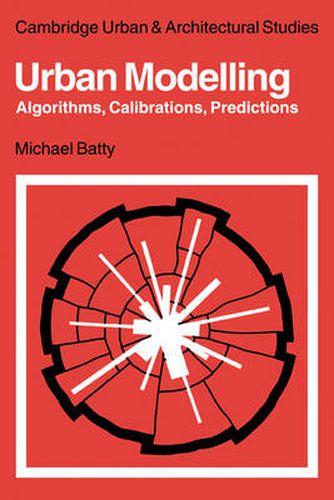Readings Newsletter
Become a Readings Member to make your shopping experience even easier.
Sign in or sign up for free!
You’re not far away from qualifying for FREE standard shipping within Australia
You’ve qualified for FREE standard shipping within Australia
The cart is loading…






Originally published in 1976, this book introduced a series of mathematical models of urban phenomena relevant to scientists and planners attempting to understand and predict the form of cities and regions. Dr Batty organises the book around the main theme of designing and using such models in practical situations and develops a family of static and dynamic models dealing with the location of land use and economic activities. He describes the models both as urban theories and as computer algorithms, and thoroughly explores the process of calibrating or ‘tuning’ the models to reflect reality. Problems concerning the definition of the spatial systems to which these models refer are examined, as are other practical difficulties such as data organisation. The quasi-experimental approach which characterises this style of computer model-building extends to using the models in conditional prediction and Dr Batty discusses their role in the planning process, with their use in testing the impact of public policies on existing conditions.
$9.00 standard shipping within Australia
FREE standard shipping within Australia for orders over $100.00
Express & International shipping calculated at checkout
Originally published in 1976, this book introduced a series of mathematical models of urban phenomena relevant to scientists and planners attempting to understand and predict the form of cities and regions. Dr Batty organises the book around the main theme of designing and using such models in practical situations and develops a family of static and dynamic models dealing with the location of land use and economic activities. He describes the models both as urban theories and as computer algorithms, and thoroughly explores the process of calibrating or ‘tuning’ the models to reflect reality. Problems concerning the definition of the spatial systems to which these models refer are examined, as are other practical difficulties such as data organisation. The quasi-experimental approach which characterises this style of computer model-building extends to using the models in conditional prediction and Dr Batty discusses their role in the planning process, with their use in testing the impact of public policies on existing conditions.